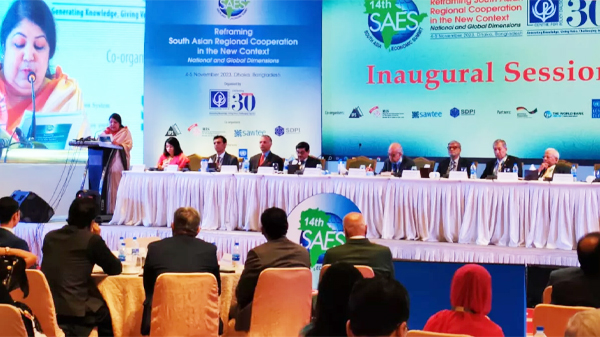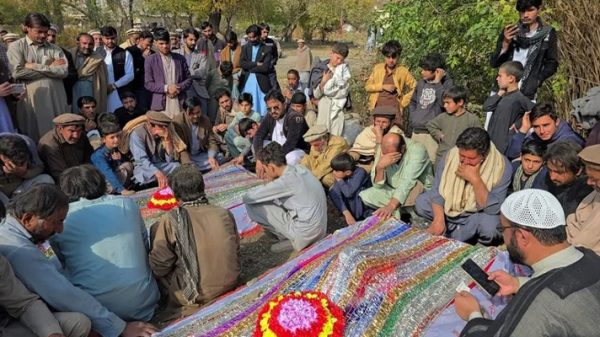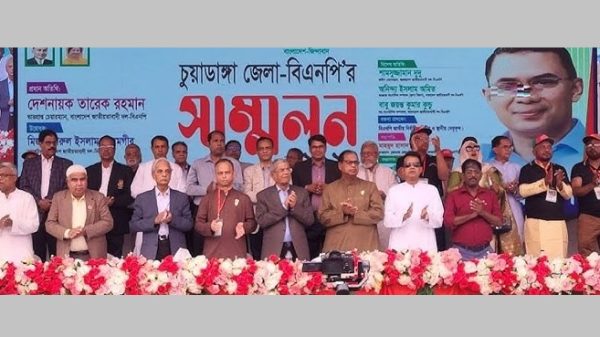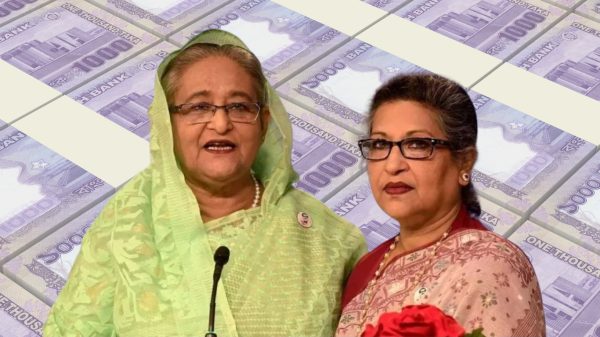Connectivity, trade cooperation needed for sustainable economic growth in South Asia: Speakers at 14th SAES say

- Update Time : Saturday, 4 November, 2023, 05:53 pm
- 94 Time View

Online Desk: Speakers in 14th South Asian Economic Summit (SAES) have said regional connectivity, trade cooperation and liberal customs policy are needed alongside political stability for sustainable economic growth in this region.
They said that cooperation amongst the countries is more important for expanding trade and better regional economy than competition.
They made the observations at the inaugural session of 14th SAES, held in a Dhaka hotel, today with the theme ‘Reframing South Asian regional cooperation in the new context of national and global dimension.’
Speaker Dr Shirin Sharmin Chaudhary MP was present at the opening session, while Planning Minister MA Mannan was the special guest.
Professor Rehman Sobhan, presided over the program.
Among others, Dr P Nandalal Weerasinghe, governor, central bank of Sri Lanka; Dr Ishrat Husain, former governor, state Bank of Pakistan; Ambassador Durga Bhattarai, former foreign secretary, Nepal; Professor Sachin Chaturvedi, director general, Research and Information System for Developing Countries (RIS), India; Dr Abid Qaiyum Suleri, executive director, Sustainable Development Policy Institute (SDPI), Pakistan; Dr, Paras Kharel, executive director, South Asian Watch on Trade, Economics and Environment (SAWTEE), Nepal; Dr Dushni Weerakoon, executive director, Institute of Policy Studies of Sir Lanka (IPS); and Dr Fahmida Khatun, executive director, CPD, spoke at the function.
CPD is organizing the 14th South Asian Economic Summit, where researchers from South Asian countries and the World Bank joined. The summit will end on Sunday.
The papers presented at the summit stated that South Asia accounts for only 4 percent of the world’s surface area, yet the region is home to nearly 1.9 billion people, about one-fourth of the global population (World Bank, 2023).
South Asia also has the highest population density in the world.
The majority of its population still resides in rural areas. With only 36 percent of inhabitants living in urban areas, South Asia is one of the least urbanised regions in the world (World Bank, 2023). However, over the next decades, the region is expected to have a faster urban growth and may outpace the rest of the world.
South Asia has been growing at a remarkable rate and has played an integral part in reducing the number of people in the world living under USD 1.9 per day. Yet, this persistent growth has slowed down within the region with the advent of the COVID-19 pandemic as countries have experienced sluggish growth and a decline in per capita income.
For instance, about 42 percent of the population in South Asia live under USD 3.65 per day as of 2021 (World Bank, 2022). Furthermore, most people classified as extremely poor are from South Asia and Sub-Saharan Africa (Islam, Newhouse, & Yanez-Pagans, 2021).
Besides, according to the 2123 Global Hunger Index (GHI), all the countries in the South Asian region, including Bangladesh, have GHI scores which are labelled as “serious” (data unavailable for Bhutan and Maldives).
On the positive side, there is evidence of a declining trend compared to earlier decades.










